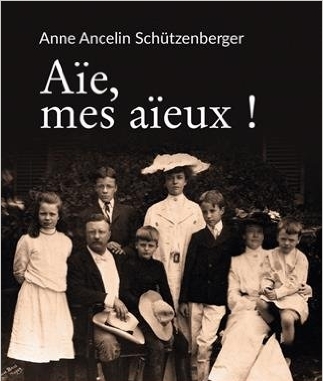02.02.2017
 Devastation caused by the Armenian Genocide was immense not only in physical but also in psychological and spiritual levels. Psychological studies of genocide deal with traumas, psychological and mental characteristics of survivors, different psychological effects of genocide on generations of the survivors and other similar issues.
Devastation caused by the Armenian Genocide was immense not only in physical but also in psychological and spiritual levels. Psychological studies of genocide deal with traumas, psychological and mental characteristics of survivors, different psychological effects of genocide on generations of the survivors and other similar issues.
An important observation on an aspect of psychological trauma of genocide was done by French psychologist Anne Ancelin Schützenberger in her book titled “The Ancestor Syndrome: Transgenerational Psychotherapy and the Hidden Links in the Family Tree”, first published in 1998. This book is generally focused on the influence of emotional experiences and their transmission through generations. Here Anne Schützenberger creates her own method of therapy, and the main tool of the latter is genosociogram. With the help of genosociogram Anne Schützenberger examines the complex knots of tragic family histories and by highlighting the transgenerational links she offers a method to stop the intergenerational unconscious repetitions.
Anne Schützenberger touches upon the psychological trauma of genocide and its penetration in lives of survivors and their descendants. The author views this phenomenon on the example of some psycho-somatic features of the survivors of the Armenian Genocide and their generations through building their genosociograms. Working with family cases she comes across the case of a French woman of Armenian descent-Jacqueline- as transmitted unconscious repetition as well as somatic and neurotic manifestation of trauma caused by the Genocide.
Hairdresser Jacqueline comes to psychologist wearing a neck-brace. This factor caught psychologist’s attention and she asked what had happened. It appeared to be the result of a car accident, and it happened immediately after the death of Jacqueline’s little daughter. The child was born with the umbilical cord wrapped around her neck and became physically and mentally disabled. During the talk psychologist revealed that Jacqueline’s sister once had a child who was born with a herniated cervical disk or by Jacqueline’s words “her brains dripping from her head”.
Seeing that Jacqueline’s family has problem of diseases associated with the head, and given that Jacqueline, her parents and grandmother were hairdressers, Anne Schützenberger assumes that the axis of their lives is related to a specific part of human body- head, and finds it extraordinary that
“this family has taken care of heads for three generations.”?(p. 102). So Schützenberger builds Jacqueline’s genosociogram.
The psychologist emphasizes that crucial information for the construction of genosociogram was that Jacqueline’s grandmother was born in the Ottoman Empire and came to France after the Armenian Genocide. Jacqueline told her that her grandmother saw Turkish persecutors go by carrying the severed heads of her two sisters and her mother impaled on lances. After inquiring about the Armenian Genocide Remembrance Day, the psychologist finds connection with the date of Jacqueline daughter's death. The child died on 24 April 1986. Anne Schützenberger writes that it was a shock for her that the women were hairdressers and that Jacqueline’s grandmother after seeing the heads cut off have repaired, prettied-up heads:
“One might have the impression that these French women of Armenian origin and their children had a strange way of expressing what happened in their community and their family: they expressed it through their bodies and the bodies of their children. As if somehow they had to repair the genocide, recall the genocide, the injustice, the unjust and premature deaths.” (p. 104).According to Anne Schützenberger, it is obvious that this phenomenon is a pattern of unconscious repetitions and loyalty to their family.
The idea of genetic memory is not new. Renowned psychotherapist Carl Gustav Jung interprets genetic memory as heritable as well as transmitting factor of archetypal images. Modern research shows that there are certain changes in phenotypes of genocide survivors and their descendants. The picture in personal and national levels is diverse, and in this sense genocide trauma has different dimensions, but their destructive effects and the factors leading to recovery are interrelated.
Shushan Khachatryan





